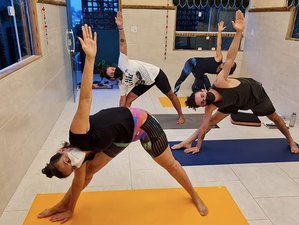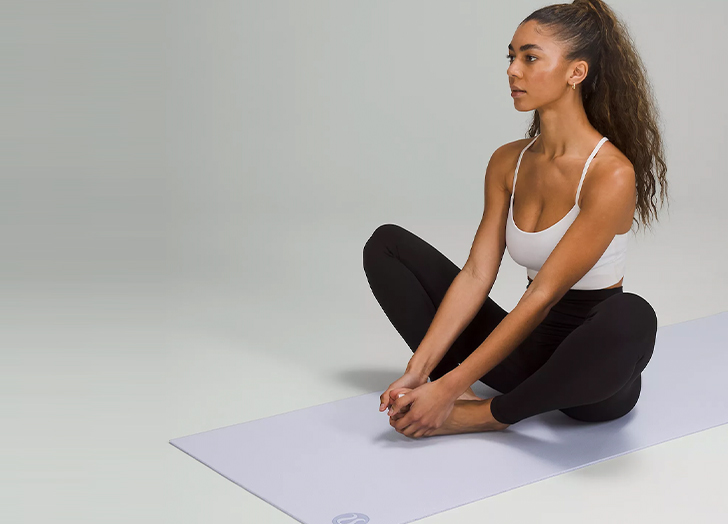
The Yoga Sutras are a collection 195-196 Sanskrit Sutras. The text was written during the first centuries CE by the Sage, or Yogi, who is credited with its creation. He combined the different teachings of yoga, from various traditions, and made them into a cohesive set of yogic guidelines. The Patajali Yoga Sutras have a vital role in the practice of yoga.
The Yoga Sutras were originally in Sanskrit. Many translations are now available. Some translations have commentary by Swami Vivekananda and Sri K. Pattabhi Jois. The text can be found in English, although many yogic experts argue that a translation would not accurately convey its meaning. The sutras describe the path of moksha, or enlightenment, through the union of the body and the mind.

The Theosophical Society first translated the Patanjali Yoga Sutras in English in 1885. These translations allowed the ancient Indian wisdom to be accessible to a broad audience. The texts are still heavily dependent on later commentators, which makes them incomprehensible in places. This does not mean you should ignore learning them. These techniques will enhance your yoga practice.
The yoga sutras have many benefits for both aspiring yogis as well as those who have been practicing regularly for a while. A PDF version is available for free, whether you are looking for a comprehensive guide or just want to learn about the history of yoga. So, get reading and enjoy!
The Yoga Sutras and Meanings of Patanjali's Patanjali Yoga - Why They Matter in Your Spiritual Practice
The Sutras are divided in four limbs. The first two are primarily related to moral and observances and the third to asana. Asana is the most crucial limb of yoga and is an integral part. Asana is the only limb in the sutras that directly refers to yoga. Asana means a stable, easy, and comfortable position.

The Yoga Sutras offer great inspiration. They teach us how to live a fulfilling life by letting go of all our worries. You can find peace and tranquility in a place you can meditate or relax. This will help you become the best version of yourself. You don't have to be afraid of pain. You will succeed if you put in the effort, and stick to a plan.
Yoga Sutras can be a valuable resource for anyone interested in yoga. While it can be overwhelming to read a book in its entirety, the intention is for it to become a living reality. The Patanjali Yoga Sutras consist of three main parts. It is the basis for practicing yoga. The introduction of the sutras is the second section of the introductory section.
FAQ
Are you a cardio-exercise fan?
Cardiovascular exercise has many benefits. It increases blood circulation, strengthens the heart muscle, boosts stamina, aids in weight loss, and gives you more energy.
Cardiovascular exercise includes running, biking, hiking, swimming, tennis, basketball, soccer, volleyball, football, etc.
Cardio exercises should not be done at high intensity. This could lead to injury.
If you feel fine, only do the cardiovascular exercise.
It is important not to push yourself beyond your limits. Otherwise, you could end up injuring yourself.
When you engage in cardiovascular exercise, it is best to warm up first. Start slowly increasing your intensity.
Remember, you should always listen to your body. You should stop immediately if you feel any pain while doing cardiovascular exercise.
It is also advisable to rest after a cardiovascular workout. This will allow your muscles to rest.
Cardiovascular exercise is an important part of losing weight.
It is the most efficient way to lose weight and stomach fat.
What food should I avoid if I want to lose weight
Avoid foods that contain trans fats. Trans fats can increase LDL (the negative) cholesterol levels and decrease HDL (the positive) cholesterol.
Trans fats are found in deep-fried foods, fast food, packaged baked goods, snack cakes, and other processed foods.
These unhealthy fats can also lead to inflammation, which can cause heart disease and diabetes.
Foods containing artificial sweeteners should also be avoided. Artificial sweeteners can increase your risk of developing cancer.
These chemicals are found everywhere, from soft drinks to chewing candy to candy bars to chewing gum. They also appear in meat, poultry and eggs.
Artificial sweeteners can be saccharin or cyclamate, sucralose, sorbitol or aspartame.
The American Heart Association suggests that you avoid these chemicals as they can cause DNA damage in your cells.
How many calories should you consume each day?
It varies from one person to another. On average, between 2000 and 2500 calories a day. It's important to assess your life style, gender, age and height in order to determine how much calories you need.
Statistics
- According to the American Academy of Dermatology (AAD), men over 50 are at a heightened risk of developing it. (healthline.com)
- An estimated calorie range for moderately active adult males falls between 2,200 to 2,800 calories per day, depending on age. (eatright.org)
- According to the American Heart Association, blood pressure should be checked at least once every two years, beginning at age 20. (my.clevelandclinic.org)
- 10 pounds in a month is likely during a lean bulking phase, especially for beginners. (muscleandstrength.com)
- The PRS enabled risk stratification for overall prostate cancer and lethal disease with a four-fold difference between men in the highest and lowest quartiles (HR, 4.32; 95% confidence interval [CI], 3.16-5.89). (pubmed.ncbi.nlm.nih.gov)
External Links
How To
How can I burn fat while exercising?
Exercise helps you lose calories by increasing your metabolism and oxygen intake.
If you exercise with moderate intensity, you can safely lose weight.
These are some tips to help you lose fat while working out:
-
Cardio exercises include swimming, running or cycling.
-
For 30 minutes, do it three times a week.
-
You can add strength training into your exercise routine if you're looking to lose even more weight.
-
Avoid intense exercise. It is possible to build muscle without destroying muscle tissue.
-
Hydrate well during exercise. Water flushes out toxins, and keeps your body properly hydrated.
-
After working out, make sure to drink low-fat proteins shakes. Protein shakes are great for your muscles and energy.
-
Eat smaller meals throughout the day, so you don't feel hungry between meals.
-
Don't skip breakfast! Skipping breakfast can cause you to feel tired and sluggish.
-
Take care of your mental health. Stressful situations can affect your metabolism.
-
Keep a positive attitude. Studies show that people who believe they are overweight gain more weight then those who think they are attractive.
-
Get enough rest. Insufficient sleep can make it more difficult to lose weight.
-
Keep active. Be sure to get up and move around every hour or two.
-
Maintain a healthy diet. Healthy eating will keep you fuller and more satisfied for longer.
-
Relaxation is possible by finding ways to relax. Your body won't release stress hormones that cause muscle tissue destruction if you have a tense mind.
A balanced diet includes all essential nutrients needed for growth and development.
Consider eating six small meals daily instead of three big ones. This allows your body to properly digest what you have eaten.
Calcium is required to support strong bones. Calcium can be found in dairy products such as yogurt, fortified soybean beverages, orange juice, cereals, bread, and cereals.
Calcium is found in leafy vegetables, beans and tofu, as well nuts, seeds and cheese.
Vitamin D is necessary for the body to absorb calcium. It's found in fatty fish, egg yolk, and some fortified foods.
Vitamin E is vital for your skin's health. It's found in vegetable oils, wheat germ oil, peanuts, almonds, sunflower seeds, and corn.
Zinc is essential for healthy immunity and wound healing. Zinc can be found in seafood, legumes and meats.
Zinc deficiency can cause fatigue, loss of appetite, depression, and impaired immunity.
Sugar intake can lead to insulin resistance which causes blood glucose levels to rise. Insulin resistance can lead to weight gain.
Insulin resistance develops when there are high levels of free radicals in the bloodstream. Free radicals are molecules that have unpaired electrons, which can cause damage to cell membranes or other parts of your body.
Food additives, pesticides and herbicides, as well as preservatives, smoking and radiation are all sources of free radicals.
Free radicals can lead to cancer and heart disease, diabetes mellitus, arthritis, asthma, and premature aging.
Eating a well-balanced diet with antioxidants is the best way to prevent free radical damage. Antioxidants protect against oxidative damage.
Vitamin C, beta carotene (found within citrus fruits, carrots, sweet potatoes and spinach), Vitamin E (found inside nuts, olive oils, avocados and eggs), and Vitamin C (found among mangoes.
Selenium, manganese (and zinc) are other antioxidant nutrients.
Selenium helps to protect cells against free radicals and oxidative stress. Selenium can also be found in Brazil nuts (tuna), liver, kidneys and shrimp.
Copper protects eyes, brain, lungs and red cells. Copper is also found in poultry, meat, and organs.
Manganese is an essential component of bone structure. Manganese is found in brown rice, spinach, bananas, prunes, raisins, oatmeal, and lentils.
Zinc is necessary for average growth, reproduction, and wound healing. Zn is present in lean cuts of meat and white fish, as well as eggs.